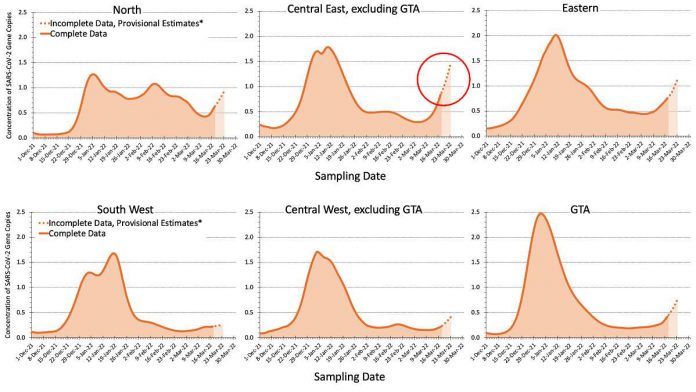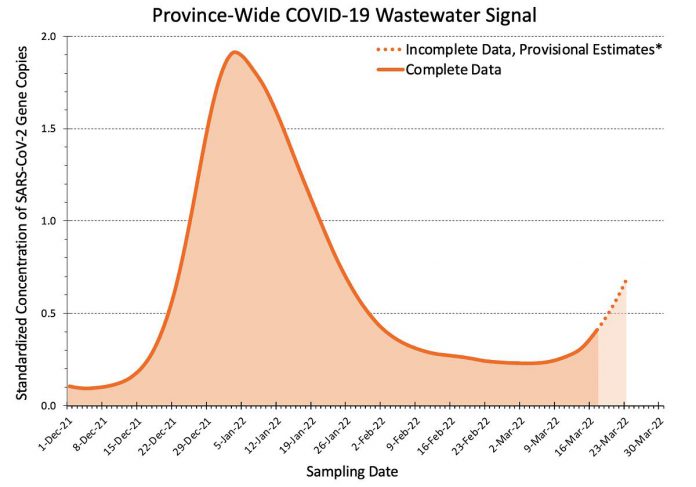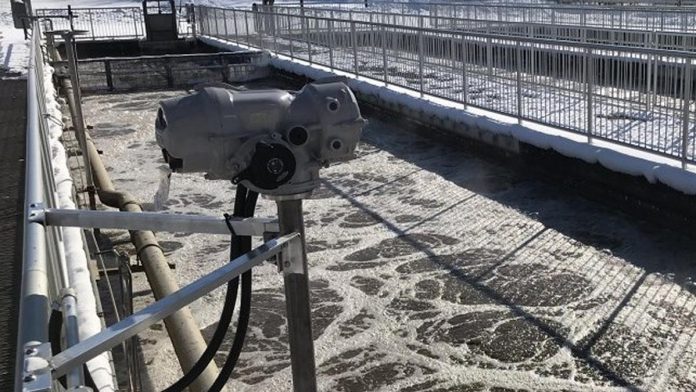A week after the Ontario government lifted its mask mandate, the Kawarthas region has the highest COVID-19 wastewater signal in Ontario — a leading indicator of the number of COVID-19 cases in the community.
According to the most recent data published by the Ontario COVID-19 Science Advisory Table, the Central East region — which includes Peterborough Public Health, Haliburton, Kawartha, and Pine Ridge District Health Unit, and Simcoe Muskoka District Health Unit — is reporting the highest wastewater concentration of the virus that causes COVID-19.
Sampling of wastewater for the virus is the most accurate method for estimating COVID-19 transmission, now that the Ontario government has restricted eligibility for polymerase chain reaction (PCR) testing to at-risk people. People infected with COVID-19, even if they aren’t showing symptoms, can shed the virus in their stool.
Dr. Peter Jüni, the science table’s departing scientific director, estimated last week there are between 20,000 and 25,000 daily infections in the province based on the wastewater signal.
“We are now starting to see exponential growth again and what worries me is that it looks as if it will be relatively steep,” Jüni said. “It’s really important for people to take it slow and not get ahead of themselves with increasing their contacts, with going to crowded places and with dropping their masks.”
According to the science advisory table, the COVID-19 wastewater signal is a “weighted mean of standardized, biomarker-normalized concentrations of SARS-CoV-2 gene copies” sample across 101 wastewater treatment plants, pumping stations, and sewersheds in the province’s 34 public health unit regions. The science advisory table says there’s a five-to-seven day lag between the detection of the virus in wastewater and the diagnosis and reporting of COVID-19 cases.

As of March 16, based on complete data, the concentration of the virus in wastewater in Central East region was around 0.8, double the provincial average of around 0.4. As of March 23, based on incomplete data and provisional estimates, the concentration in Central East region was approaching 1.5 — more than double the provincial average of 0.7 for the same period.
In terms of how this breaks down for the health units in Central East Region, Simcoe Muskoka District Health Unit is reporting increases in the wastewater signal for Midland, Barrie, and Collingwood. As of Monday (March 28), Haliburton, Kawartha, and Pine Ridge District Health Unit is reporting a large increase in the wastewater signal for the Cobourg sewershed and a smaller increase for the Lindsay sewershed.
Unlike the other two health units in Central East region, Peterborough Public Health does not currently publish wastewater surveillance information on its COVID-19 dashboard. kawarthaNOW reached out to the health unit and was told current local wastewater data will be released sometime this week.
After Central East region, the next highest COVID-19 wastewater signals in Ontario are in Eastern region followed by the North and the GTA.
The test positivity rate in Ontario appears to be reflecting the increase in the COVID-19 wastewater signal.
On Monday, the Ontario government reported a test positivity rate of 17.9 per cent — the highest since late January — based on 6,243 PCR tests that were completed.

Although the wastewater signal continues to climb in Central East region as well as the rest of Ontario, it remains unclear what this means aside from an increase in daily infections.
While the number of people in Ontario hospitalized with COVID-19 has been gradually increasing over the past three weeks, the number of admissions to intensive care units has continued to decline.
In Peterborough and Lindsay, the number of people hospitalized with COVID-19 has remained relatively stable.




























